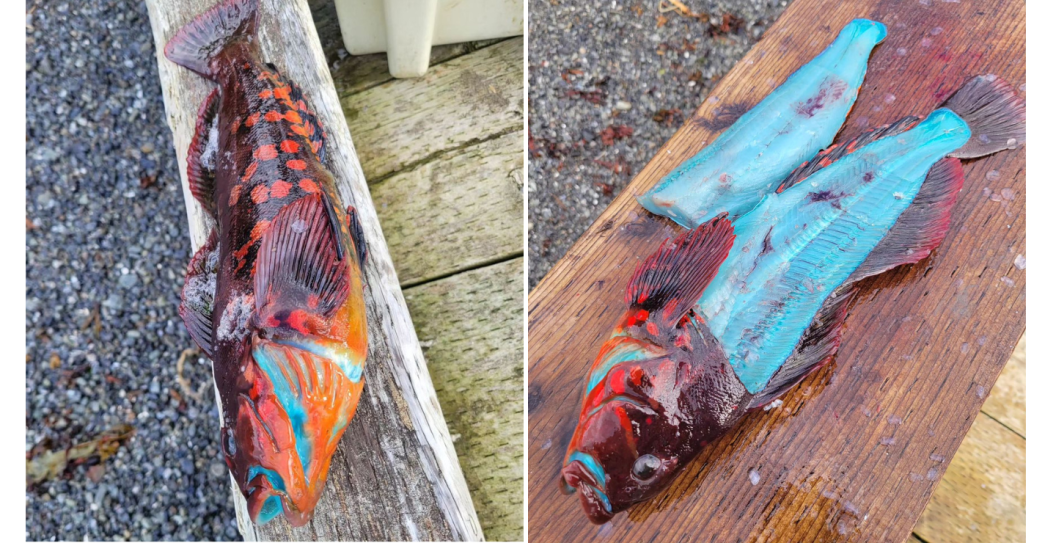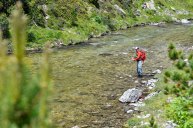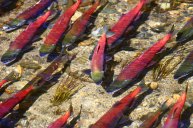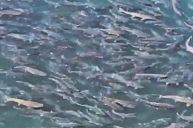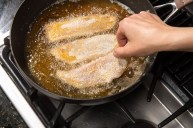Alaska is known for its incredible, world-class fishing. Fishermen catch everything from 100-pound halibut to king salmon, steelhead to rockfish—and, you can also apparently catch candy-colored bright blue fish.
Joe Chmeleck, owner of The Lodge at Otter Cove in Homer, Alaska, reeled in an incredible, turquoise-blue rock greenling in late August of this year. The Lodge's Facebook post of the fish quickly went viral for the greenling's startling colors, which look somewhat like a Fruit Roll-Up or Gobstopper anthropomorphized.
While the colors make the greenling appear to be straight out of a Dr. Seuss book, the blue coloring is actually caused by a very rare green bile pigment called biliverdin, according to Alaska Department of Fish and Game biologist Donald Arthur. Biliverdin colors the blood plasma of animals. According to a study of biliverdin, the blue-green blood plasma not only occurs in fish, but also can be present in the blood of tobacco hornworms, the wings of moths, the shells of bird eggs, and in the blood of some humans suffering from hepatic diseases.
Arthur told Alaska News Source that scientists aren't sure why some fish produce the pigment, but it's believed to be a result of UV radiation, diet, or genetics.
Greenling are a part of the lingcod family, a fish that is known to occasionally have bright blue flesh. Studies have shown that the occurrence of blue flesh is highest in small, female lingcods caught in shallow water. The overall percentage of blue lingcod ranges from 4 to 25 percent of the lingcod population, depending on the region.
This isn't the first time Chmeleck has caught a bright blue greenling. ?We caught one about a year ago," Chmeleck told Alaska News Source. "We were sort of a little bit afraid of it, we didn't know if it was poisonous or what it was. Typically when it is super colorful like that I've been told, the more colorful, the more dangerous it is."
Despite looking toxic, the bright blue greenlin is safe to eat. Chmeleck shared a video in the comments of him cooking the fish. As the flesh cooks, it turns from blue to white.
"We filleted it, cooked it up and it was absolutely fantastic," Chmeleck told Alaska News Source.
READ MORE: Kokanee Salmon: Everything You Need to Know About the Iconic Species
